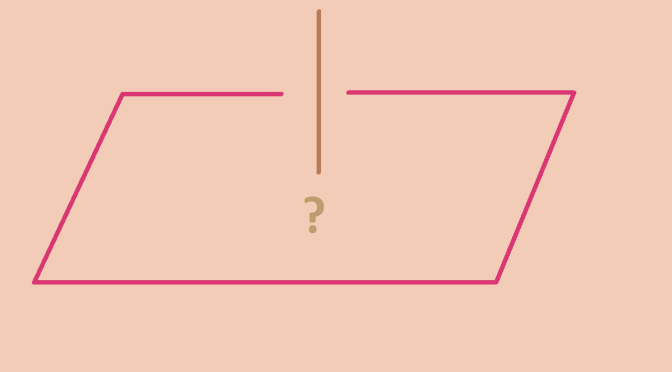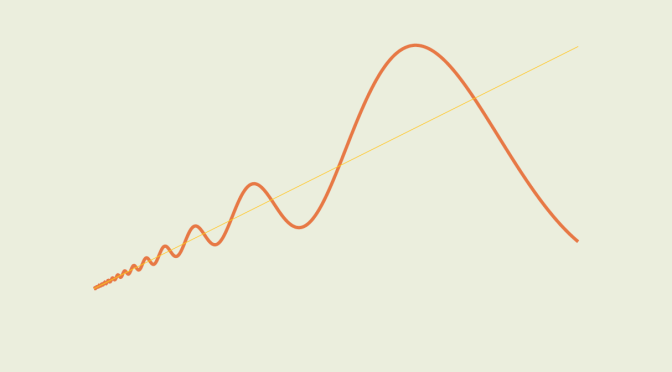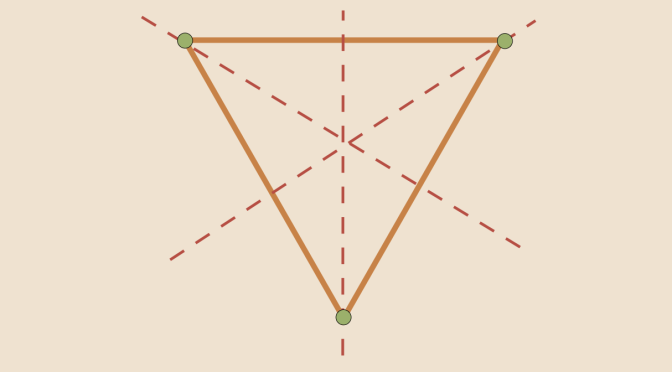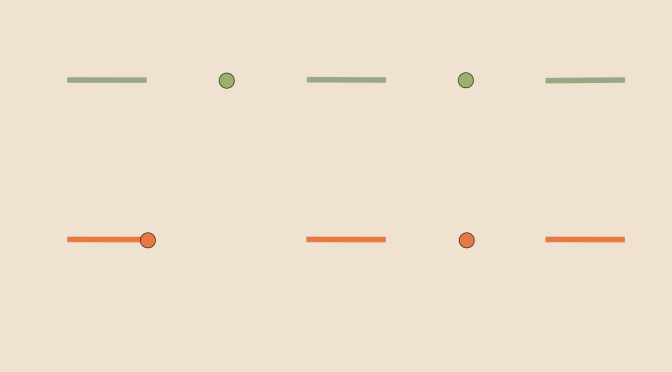
Let’s investigate the following question: “Is the distance between a point and a hyperplane always reached?”
In order to provide answers to the question, we consider a normed vector space \((E, \Vert \cdot \Vert)\) and a hyperplane \(H\) of \(E\). \(H\) is the kernel of a non-zero linear form. Namely, \(H=\{x \in E \text{ | } u(x)=0\}\).
The case of finite dimensional vector spaces
When \(E\) is of finite dimension, the distance \(d(a,H)=\inf\{\Vert h-a \Vert \text{ | } h \in H\}\) between any point \(a \in E\) and a hyperplane \(H\) is reached at a point \(b \in H\). The proof is rather simple. Consider a point \(c \in H\). The set \(S = \{h \in H \text{ | } \Vert a- h \Vert \le \Vert a-c \Vert \}\) is bounded as for \(h \in S\) we have \(\Vert h \Vert \le \Vert a-c \Vert + \Vert a \Vert\). \(S\) is equal to \(D \cap H\) where \(D\) is the inverse image of the closed real segment \([0,\Vert a-c \Vert]\) by the continuous map \(f: x \mapsto \Vert a- x \Vert\). Therefore \(D\) is closed. \(H\) is also closed as any linear subspace of a finite dimensional vector space. \(S\) being the intersection of two closed subsets of \(E\) is also closed. Hence \(S\) is compact and the restriction of \(f\) to \(S\) reaches its infimum at some point \(b \in S \subset H\) where \(d(a,H)=\Vert a-b \Vert\). Continue reading Distance between a point and a hyperplane not reached →

From the mean value theorem, a real function whose derivative is strictly positive at every point of an interval is strictly increasing. In particular, a continuously differentiable function \(f\) defined in a non-degenerate interval \(I\) with a strictly positive derivative at a point \(a\) of the interval is strictly increasing near that point. For the proof, we just have to notice that as \(f^\prime\) is continuous and \(f^\prime(a) > 0\), \(f^\prime\) is strictly positive within an interval \(J \subset I\) containing \(a\). By the mean value theorem, \(f\) is strictly increasing on \(J\).
We now suppose that \(f\) is differentiable on an interval \(I\) containing \(0\) with \(f^\prime(0)>0\). For \(x>0\) sufficiently close to zero we have \(\displaystyle \frac{f(x)-f(0)}{x-0} > \frac{f^\prime(0)}{2}>0\), hence \(f(x)>f(0)\). But that doesn’t imply that \(f\) is strictly increasing in a neighborhood of zero. Let’s prove it with a counterexample. Continue reading A function whose derivative at 0 is one but which is not increasing near 0 →

In this article, we consider a group \(G\) and two subgroups \(H\) and \(K\). Let \(HK=\{hk \text{ | } h \in H, k \in K\}\).
\(HK\) is a subgroup of \(G\) if and only if \(HK=KH\). For the proof we first notice that if \(HK\) is a subgroup of \(G\) then it’s closed under inverses so \(HK = (HK)^{-1} = K^{-1}H^{-1} = KH\). Conversely if \(HK = KH\) then take \(hk\), \(h^\prime k^\prime \in HK\). Then \((hk)(h^\prime k^\prime)^{-1} = hk(k^\prime)^{-1}(h^\prime)^{-1}\). Since \(HK = KH\) we can rewrite \(k(k^\prime)^{-1}(h^\prime)^{-1}\) as \(h^{\prime \prime}k^{\prime \prime}\) for some new \(h^{\prime \prime} \in H\), \(k^{\prime \prime} \in K\). So \((hk)(h^\prime k^\prime)^{-1}=hh^{\prime \prime}k^{\prime \prime}\) which is in \(HK\). This verifies that \(HK\) is a subgroup. Continue reading Two subgroups whose product is not a subgroup →

We consider here two topological spaces \(X\) and \(Y\). We also suppose that \(f\) is a continuous bijection from \(X\) to \(Y\) and \(g\) a continuous bijection from \(Y\) to \(X\). Providing such hypothesis (H), is there necessarily an homeomorphism from \(X\) to \(Y\)? Continue reading Two continuous bijections but no homeomorphism →
Mathematical exceptions to the rules or intuition




